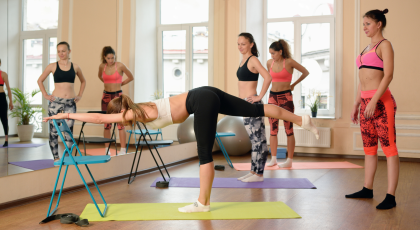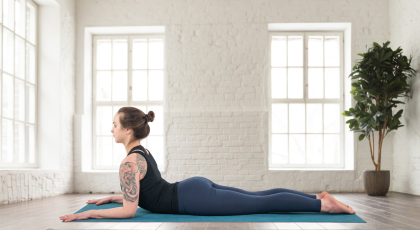View basket (0 items $0.00)

Breast Cancer: What Are the Risk Factors?
Like my wedding day and the birth of my first child, forever etched in my memory, is the day I received my breast cancer diagnosis. It was 2007. I went from a busy workday to my annual mammography appointment. My initial clue that something was amiss came when the waiting room emptied out. Weary after a long day of teaching, I felt impatient to get home to begin the evening tasks of dinner, grading papers, etc.
The next clue came when the technician said she needed to take a few more pictures. Even then, I didn’t worry. It wasn’t atypical to be called in for a second set of films. That’s why when the radiologist finally met with me and said she needed to perform a biopsy, I was stunned. Later, when the biopsy came back positive, I was devastated.
Learning you have cancer is unsettling, especially when you’ve lost a loved one to it. In my case, my mother had passed away ten years earlier from kidney cancer. Hers was a long and difficult battle that involved both chemo and radiation. She’d been a young 62 years old when she died. Now I had cancer. I was only 45 years old.
Breast Cancer Risks
As I soon learned (and you become an expert pretty rapidly), only 15 to 20 percent of breast cancer patients have a prior family history. Just as startling, one in eight women will develop breast cancer over the course of their lifetime. While men are not immune, women face a higher risk due to a number of factors. According to the Center for Disease Control (CDC) these include:
-
Getting older (increased risk after age 50)
-
Genetic mutations (such as having the BRCA1 or BRCA2 gene)
-
Reproductive history
-
Having dense breasts
-
Personal or family history of breast or ovarian cancer
-
Exposure to estrogen
While these risks are beyond our control, we can influence other common risk factors such as poor dietary habits, infrequent exercise, obesity and alcohol consumption.
For me, most of the common risk factors didn’t apply. Since I maintained a reasonably healthy lifestyle, I started looking for other causes. I scoured the internet and took books out of the library. My research yielded some startling facts. Common conditions, such as chronic inflammation, stress, and poor sleep quality, can increase the likelihood of an individual being diagnosed with cancer.

Chronic Inflammation and Breast Cancer
When something damages cells, your body releases chemicals that trigger an immune system response. Usually, this response lasts for a few hours or days, but when it lingers, it is known as “chronic inflammation.” Over time, chronic inflammation has a negative impact on healthy cells, tissues, and organs, causing symptoms such as fatigue, fever, and pain. In fact, chronic, system-wide inflammation plays a critical role in creating an environment that encourages mutated cells to turn malignant. Further, a growing number of studies tie chronic inflammation to breast cancer.
Breast Cancer and Stress
Breast cancer is often called a “disease of the well-off.” According to the World Health Organization (WHO), women in North America and Western Europe have four times the risk of a diagnosis than their counterparts in Third World countries.
While having money hardly causes cancer, women in wealthy countries typically face more stress. In a culture that says we can have it all, women tend to be over-scheduled, both personally and professionally. As a result, their nervous systems dwell in chronic fight-or-flight responses, flooding the body with the stress hormone cortisol. This leads to increased inflammation in the body. The result? Increased fatigue, sleep deprivation, and anxiety, not to mention sugar and wine cravings. Stress creates a vicious cycle that puts women at an ever greater risk of breast cancer.

Poor Sleep Can Contribute to Breast Cancer
Not only does stress contribute to inflammation, but it also disrupts our sleep cycles. Studies show that any disruption in the body’s circadian rhythms—the natural pattern of bodily functions that are regulated by our 24-hour internal clock—can contribute to an increase in breast cancer.
Circadian rhythms affect the production and release of cortisol. Manufactured in your adrenal glands atop your kidneys, cortisol levels normally peak within a few hours of waking (around 8:00 am), when our bodies need energy to tackle the day’s tasks. From that peak level, cortisol levels generally decrease throughout the day, reaching their lowest point in the late evening just before bed. Lower evening cortisol levels allow you to produce melatonin, a hormone responsible for regulating our sleep-wake cycle. Recent studies suggest that chronic circadian rhythm disruption contributes to cancer risk. Case in point, studies of nurses who work the night shift experience a higher incidence of breast cancer.
How to Reduce Your Risk with Yoga
How can we reduce inflammation and stress and get a better night’s sleep? In addition to eating a diet high in whole grains, fruits, and vegetables, exercising, and losing weight, maintaining a regular yoga practice which includes diaphragmatic breathing and deep relaxation, can help. My top pick of stress-reducing yoga poses is Legs-Up-the-Wall Pose (Viparita Karani).
A gentle, accessible inversion, Legs-Up-the-Wall Pose calms your nervous system, reducing both stress and inflammation, and sets you up for a restful night’s sleep. Start with 2 to 3 minutes and gradually increase the time spent in the pose to 10 to 20 minutes.
Please note that if you suffer from uncontrolled high or low blood pressure, it’s best to limit the amount of time you spend in the pose. Further, individuals with serious eye problems, such as glaucoma, or a hernia, should avoid it.
Here is a short video, which has several variations of the pose, to get you started:
Legs Up the Wall Practice
Reprinted with permission from WisdomTreeYoga.com

Beverly Davis-Baird, MA, C-IAYT, is a New Jersey-based yoga therapist, writer, and educator. She specializes in making yoga accessible for adults 50+, offering classes and workshops for back care, arthritis, bone health, balance, posture, and healthy aging. An educator at heart with over 20 years of experience as a public school teacher, Beverly brings her knowledge of individual learning styles to her classes, providing instruction that is clear, concise, inclusive, and compassionate. Bringing over 30 years of experience and training, she considers herself a lifelong learner and believes that the practice of yoga should bring spaciousness and release from tension, not create it. As such, she strives to make yoga accessible to people of differing abilities, believing the real benefits of yoga come from what is taken with you outside of class and into your life. To read her blog or learn more about her teaching schedule and latest offerings, please visit www.wisdomtreeyoga.com.
Featured Courses









